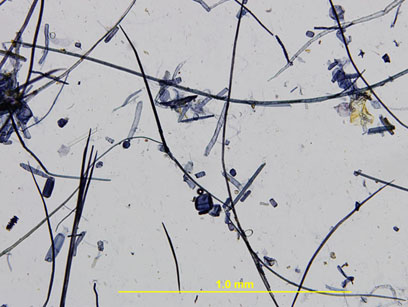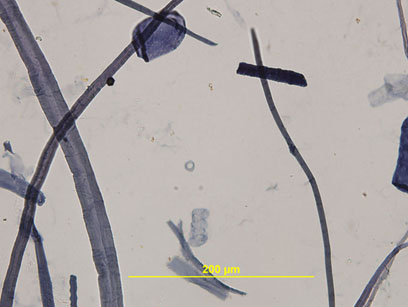Zebra Grass
| Common Name | Zebra Grass | Japanese Name | Kaya |
|---|---|---|---|
| Scientific Name | Miscanthus Sinesus Japonicum | ||
| Fibre Length | Average 2mm (0.5-3mm) | Fibre Width | Average 20µm 5-30µm |
| Fibre Ends | Pointed | Cross-Marking | Strong |
| Associated Cells | Pitted vessel elements and Paranchyma cells | ||
| Herzberg Colour | Blue | Graff 'C' Colour | Blue |
Notes:
Also known in Japan as Susuki, this grass is symbolic of late summer and autumn in Japanese art and literature. Growing from underground rhizomes, the plant grows to between 0.8-4 metres, usually about 2 metres in height. The plant is also used as thatching for traditional Japanese farmhouses.
Epidermal cells were present, (See Image 2).
| Image 1 | Image 2 |
|---|---|
 |
 |
For information about this page, contact: Travis Taylor
Contact email address: travtora@gmail.com
Centre homepage: www.culturalconservation.unimelb.edu.au
Page last modified:
This page, its contents and style, are the responsibility of the author and do not represent the views, policies or opinions of The University of Melbourne.